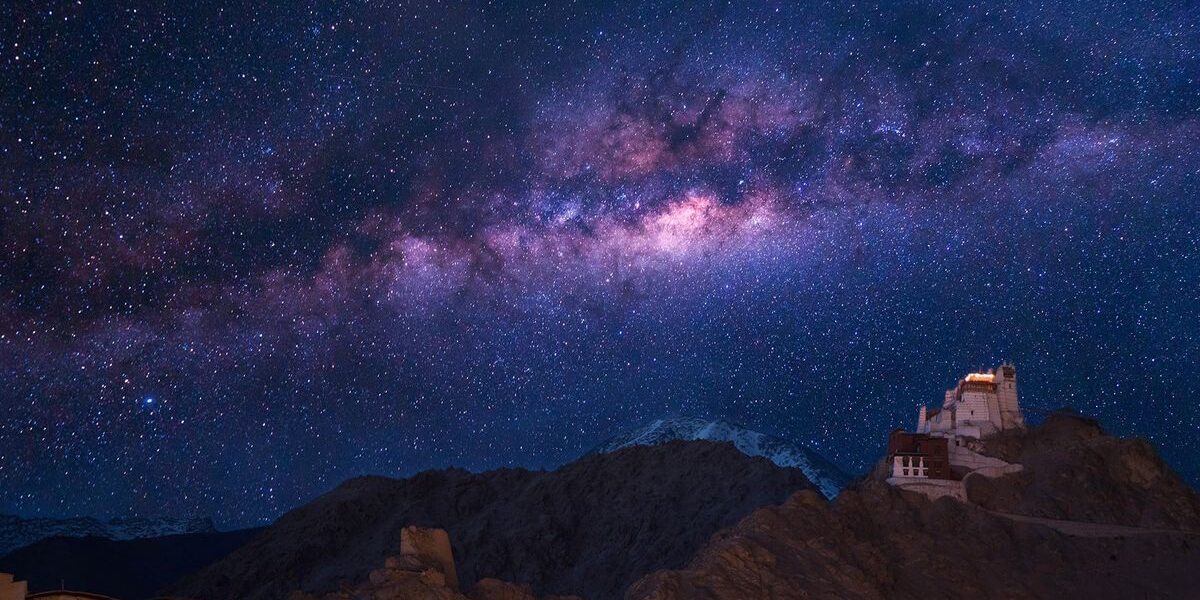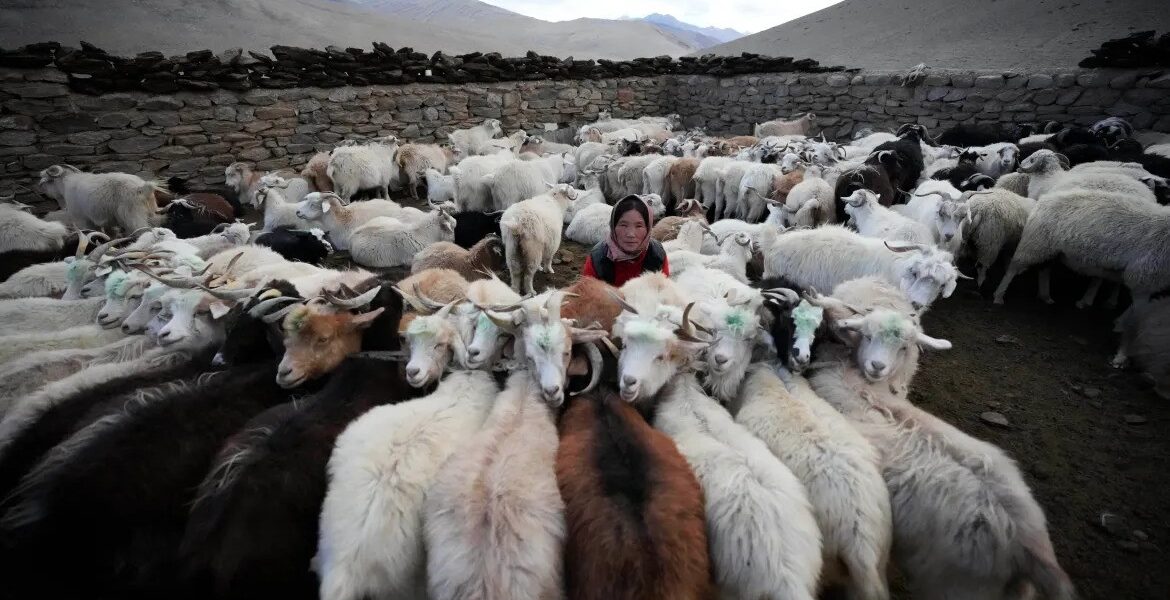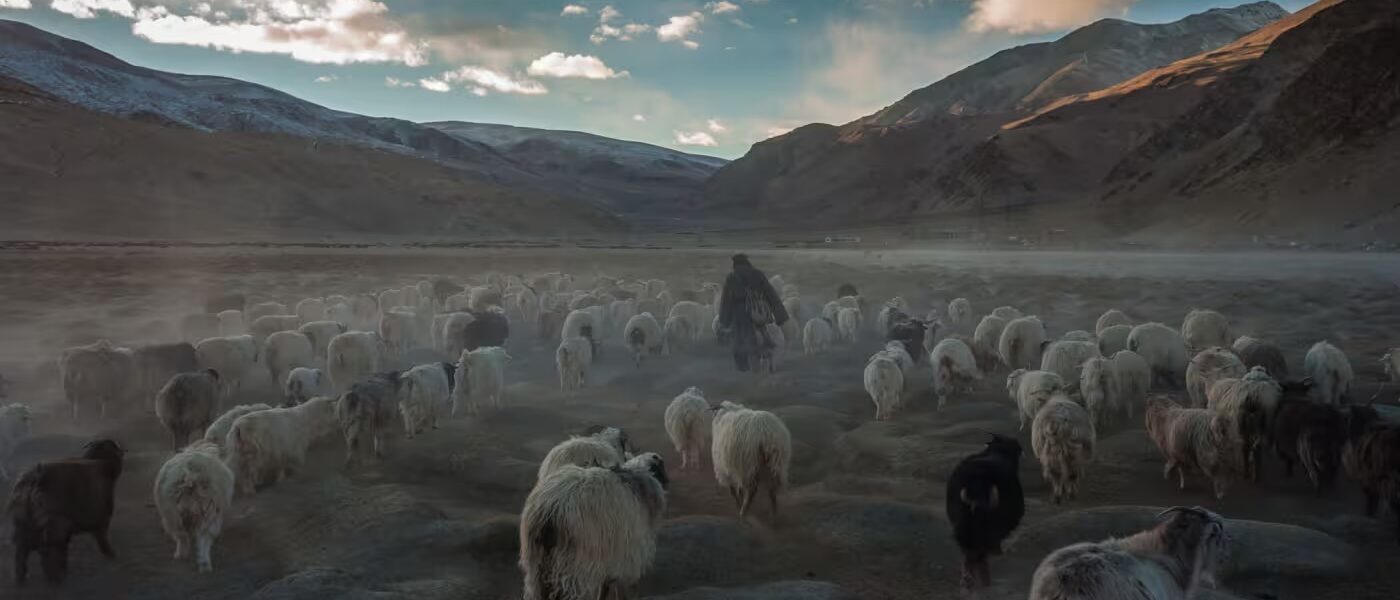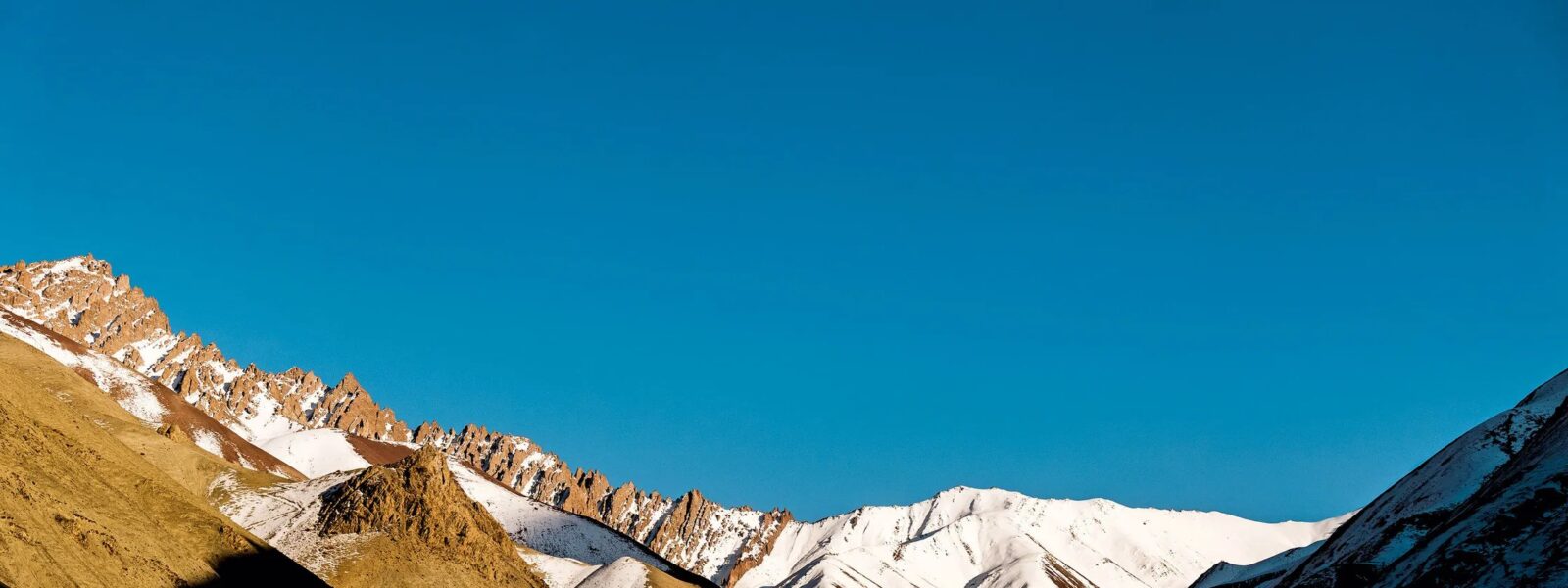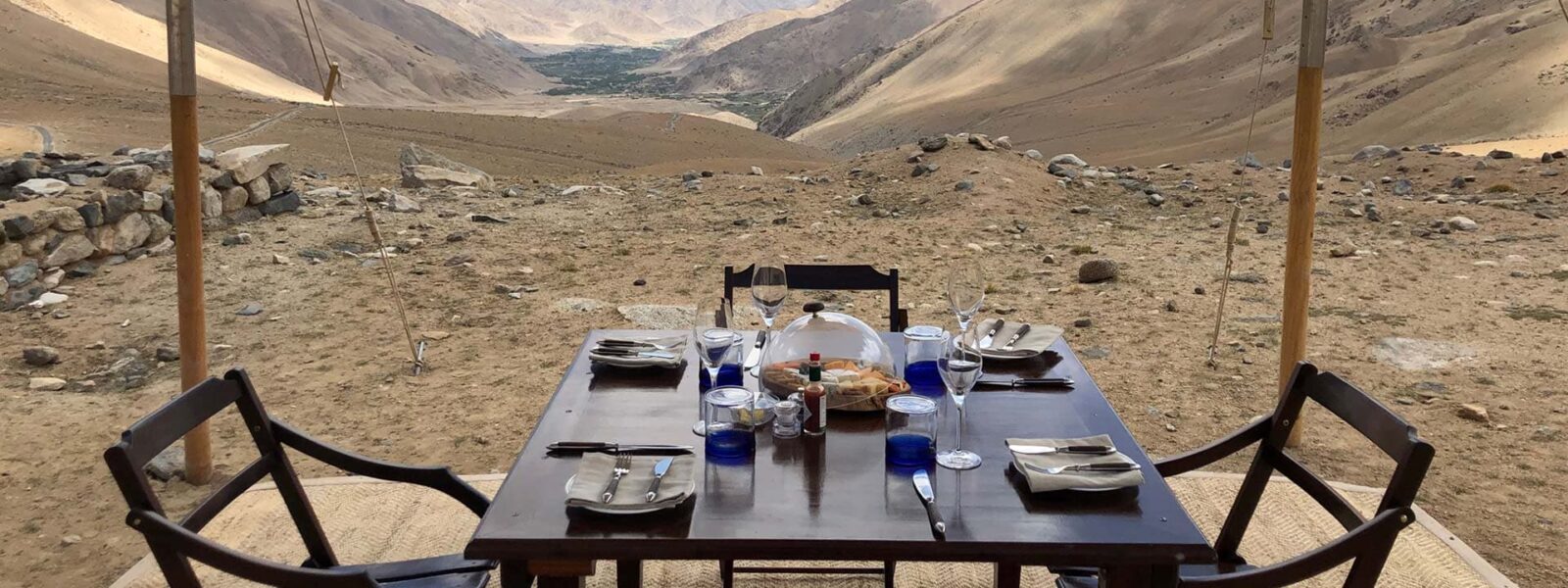Into the Cosmic Quiet: Where the Stars Begin to Whisper
It was just past twilight when I stepped outside the modest stone homestay in Sumda Chun — a hamlet so remote, it barely whispers on the map. A thin wisp of smoke curled up from the kitchen chimney, dissolving into an indigo sky. There were no horns, no headlights, no glowing city windows. Just the crunch of cold gravel beneath my boots and the silent awakening of the cosmos above.
Ladakh’s night sky is not merely dark — it is velvet-deep and startlingly alive. Up here, at more than 3,500 meters, the air is so thin and dry that light pollution is practically nonexistent. As the sun retreats behind the peaks, the sky blooms with a radiant sprawl of stars, each one brighter, crisper, and more intimate than anywhere I have ever seen — from the Alps to the Azores.
You don’t simply look at stars in Ladakh. You listen to them. Their silence feels intentional, as though they’re waiting for you to quiet your thoughts and notice. This is not tourism. This is pilgrimage under the stars.
In the West, we chase silence in meditation retreats and forest cabins. In Ladakh, silence finds you. The villagers of these high-altitude settlements understand this better than anyone. After dinner — often a warm bowl of thukpa and dried apricots — the family retires early. Electricity here is unpredictable. Wi-Fi is a myth. And so, under flickering oil lamps or solar bulbs, you slip into the kind of night where every sound is sacred: the flutter of prayer flags, the distant bark of a mountain fox, the wind brushing over dried hay.
As I stood there that night, wrapped in wool and wonder, I realized something. The stars above Ladakh do not just illuminate the sky — they illuminate us. The further we journey into such remote village experiences, the closer we come to understanding how little we truly need. A clear sky. A warm place to sleep. And the profound gift of uninterrupted stillness.
For those weary of noise, of speed, of constant connectivity — Ladakh offers a rare alternative. Not in the form of luxury, but in the form of cosmic quietude. This is where your soul catches up with your body. This is where the Himalayas teach you to be still.

Why the Night Sky in Ladakh Feels So Different
There are night skies, and then there is Ladakh. I’ve traced constellations from Croatian coastlines, watched the Aurora unfurl over Icelandic glaciers, and counted shooting stars from a Provençal hilltop. But nothing quite prepares you for the way the Himalayan night sky wraps around you here — like an ancient quilt stitched with burning threads of light.
What makes it different is not only geography, but silence. Perched above 3,000 meters, the villages of Ladakh enjoy some of the clearest atmospheric conditions in the world. With almost no humidity, sparse population, and virtually zero light pollution, these high-altitude plateaus transform into nature’s own planetarium. On moonless nights, the Milky Way over the Himalayas appears so vividly that it looks hand-painted — a broad, luminous brushstroke across a black canvas.
In fact, places like Hanle, in southeastern Ladakh, are part of India’s emerging dark sky reserve initiative. Here, science and spirituality meet in the quietest corners. Hanle is home to one of the highest observatories in the world, where astronomers and monks share the same horizon. Imagine that — telescopes and prayer wheels spinning under the same celestial dome.
For travelers yearning for more than itineraries and guidebooks, this sky offers a kind of reawakening. Stargazing in the Himalayas is not merely a visual experience — it’s a sensory one. The cold sharpens your breath, the darkness amplifies your thoughts, and the sight of Jupiter rising over a ridgeline makes you reconsider your place in the universe. No app can prepare you for the real-time epiphany of seeing Saturn’s rings — not as pixels, but as poetry.
In these remote altitudes, the stars are closer — not just optically, but emotionally. They are no longer distant myths or scientific charts. They are companions in contemplation, echoing the silence around you. And perhaps that’s why the skywatching experience in Ladakh stays with you longer than any mountain summit or monastery tour. You leave with constellations etched into your memory — stories written in starlight, waiting to be re-read from your own window, far from here.
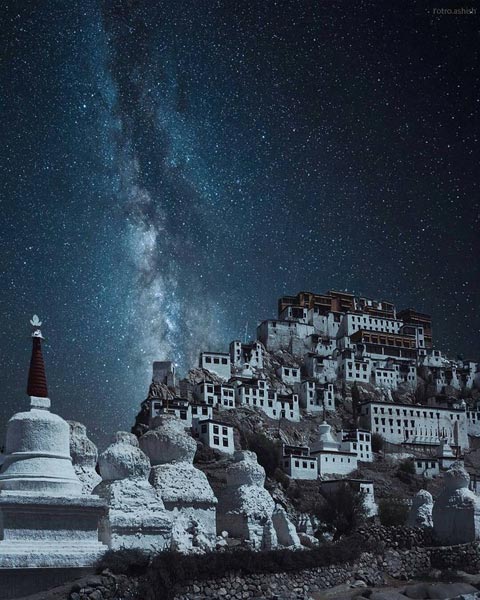
The Remote Villages: Stillness, Solitude, and Stars
When I first arrived in Ladakh, names like Turtuk, Hanle, Sumda Chun, and Garkone felt like distant echoes of an ancient language, spoken in whispers. But it was precisely these places—villages so far removed from modernity—that revealed Ladakh’s truest magic: the gentle art of simplicity beneath an endless sky.
In Turtuk, a village edging India’s northernmost boundary, apricot orchards breathe slowly beneath starlight, their leaves rustling softly, as if reluctant to disturb the night’s sacred calm. Here, I stayed in a small homestay, sharing stories over butter tea with a family whose rhythms matched the cycles of the moon. Nights in Turtuk are not dark; they are illuminated softly by starlight reflected off glacier-fed streams, quietly humming through the valley.
Then there’s Hanle, nestled near the Tibetan plateau. A place so remote that the night feels endless, stretching from horizon to horizon. Villagers here embrace darkness not as absence, but as presence—an invitation to deeper contemplation. Electricity is a precious commodity, fleeting as the winter sun, and yet their nights glow brighter than any city I’ve known. The villagers’ joy is palpable, radiating from warm hearths and open doors, welcoming strangers beneath a canopy of stars that seem close enough to touch.
In Sumda Chun, home to fewer than a hundred souls, I learned to see with my ears. Without artificial light or sound, the world shrinks to a pinpoint of sensation—the gentle chime of cowbells, the wind whispering ancient prayers, and the soft breathing of the villagers at rest. The villagers’ daily lives unfold according to nature’s calendar, bound intimately to sunlight, snowfall, and seasons rather than clocks and calendars. Here, each night under the stars feels like returning home, even for visitors from distant lands.
Finally, Garkone, an Aryan village tucked between rugged mountains, offered me the gift of stories told in firelight beneath constellations known only by local names. Here, folklore isn’t merely preserved—it’s alive, whispered by village elders beneath skies as clear as crystal. I remember vividly the elder woman, Dolma, her voice trembling slightly with age and wisdom, recounting legends as old as the Himalayas themselves. Her stories lingered with me, carried by the quietude, long after the embers faded.
To journey through Ladakh’s remote villages is to relearn silence. It is to recognize the profound luxury not of lavishness, but of stillness and solitude. Each village is a galaxy unto itself, filled with quiet rhythms, genuine warmth, and luminous skies. Here, simplicity reigns supreme, and beneath the stars, every moment feels as infinite as the night itself.
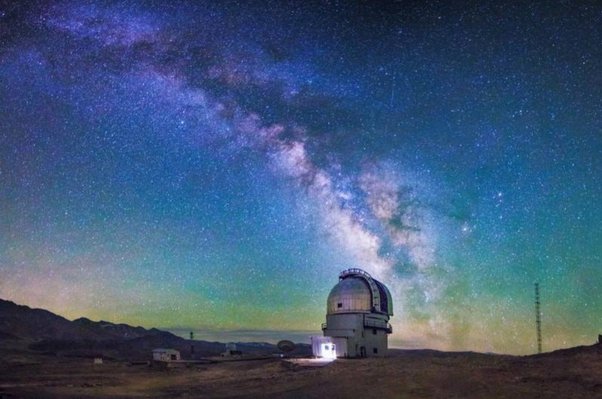
Contemplative Moments: Nighttime Meditation in the Himalayas
Meditation often conjures images of quiet rooms, soft mats, and carefully curated playlists. But in the Himalayas, beneath Ladakh’s limitless starlit canopy, meditation needs no pretense—only presence. Here, mindfulness is not practiced; it simply happens.
My first night of silent contemplation occurred spontaneously, just outside a humble village homestay in Nubra Valley. Wrapped in layers of yak wool against the chill, I sat upon an old stone wall, breathing in the brittle mountain air. Around me, shadows of jagged peaks stretched skyward, pointing toward constellations that ancient Tibetan monks mapped centuries ago.
There, beneath the ink-black expanse dotted with celestial bodies, meditation ceased to be an exercise—it became as natural as breathing. The spiritual silence of Ladakh enveloped me completely. With every inhalation, cold air sharpened my awareness; every exhalation released echoes of life’s constant hurry. Above me, stars moved imperceptibly, tracing invisible paths across the sky, teaching patience, teaching timelessness.
Earlier that day, a young monk named Tenzin had explained how Ladakhi people perceive silence. “At night,” he whispered softly, as though divulging a secret, “even the sky is praying.” Remembering his words, I realized how true they felt. Sitting quietly beneath the stars was not a withdrawal from life—it was an intimate conversation with it.
Villagers in Ladakh understand this naturally. They live rhythmically, connected intimately to the seasons, the sun, and the stars. For them, nighttime meditation isn’t scheduled—it’s integrated into their lives, emerging from moments of stillness shared around glowing embers, cups of butter tea, and quiet conversations in low voices. Their entire existence seems crafted to remind the wandering traveler of what matters most: simplicity, kindness, and the deep solace found in silence.
As minutes—or perhaps hours—passed beneath the immense Himalayan sky, the boundaries between self and surroundings gently blurred. The silhouettes of mountains became mirrors reflecting my thoughts. My own heartbeat resonated with the slow pulse of the universe above. For one timeless moment, beneath the Milky Way over the Himalayas, all the noise of modern life dissolved entirely.
This, perhaps, is the secret gift of Ladakh’s nights: they return us to ourselves. Far from home, in places so distant they feel almost mythical, we rediscover the art of simply being. Ladakh’s starlit silence is not emptiness—it is fullness, profound and immeasurable.
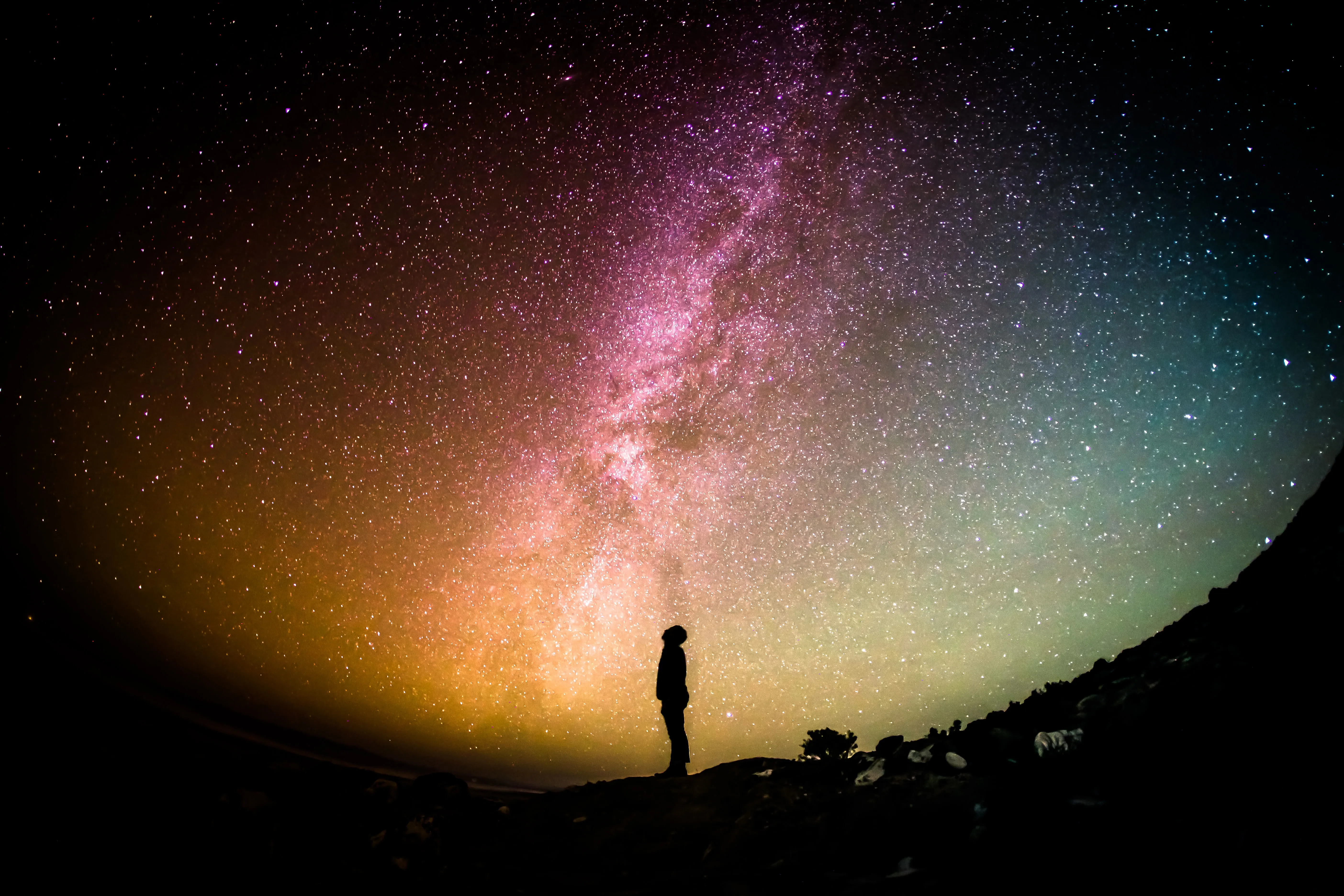
Stargazing and Night Photography Tips for Travelers
Capturing the night sky in Ladakh is not merely photography—it’s poetry written with stars. Yet, while the Himalayas generously offer their celestial spectacle, successfully photographing or simply stargazing here requires thoughtful preparation and a gentle respect for the environment around you.
On my first trip to Ladakh, my camera became both a friend and a teacher. One chilly night in Hanle, guided only by faint moonlight and local tips, I set up a tripod in an open field dotted with ancient stupas. It was here, far from urban lights, that I learned the art of night photography beneath Ladakh’s mesmerizing stars.
Firstly, timing is everything. While Ladakh’s skies dazzle year-round, autumn and early winter (September to December) offer exceptionally clear nights. The air is dry, the skies are stable, and the Milky Way shines in breathtaking clarity. Plan your photographic expedition between midnight and 4 AM—when the stars are brightest, and silence deepest.
Dress for warmth. Even during summer, Himalayan nights can be sharply cold. Layers are essential: thermal base layers, insulated jackets, gloves, and sturdy hiking boots will keep you comfortable enough to focus on your photography or simply lose yourself in stargazing without distraction.
Equip yourself wisely. A sturdy tripod is non-negotiable. Night exposures require absolute stability. Use a wide-angle lens with a large aperture (f/2.8 or wider is ideal), and experiment with ISO settings between 1600 to 3200. Exposure times between 20 and 30 seconds typically produce stunning starfields without excessive star trails—unless, of course, capturing star trails is your intent.
Yet, perhaps the best equipment I discovered wasn’t technical at all—it was human. Local guides or villagers who know the sky by heart can enrich your experience immensely. One night in Turtuk, a boy named Karim pointed towards a constellation I’d never known, telling a Ladakhi legend of lovers separated by a mountain ridge. These insights brought my photographs to life, embedding memories beyond mere pixels.
Respect the silence and darkness. Your flashlight or headlamp should have a red-light setting to preserve your night vision and avoid disturbing wildlife or fellow stargazers. Keep your voice low, your footsteps soft, and be mindful of villagers who rise and sleep with the sun.
Finally, don’t rush the experience. Allow yourself ample time—an entire night if possible—to settle into Ladakh’s unique nocturnal rhythm. Photograph slowly, mindfully, and let yourself pause to look beyond the camera’s viewfinder. In these quiet pauses, you may find your most treasured memories.
Stargazing in Ladakh’s remote villages teaches patience and presence. Photographs will fade or gather dust, but the nights you spend beneath these stars—awake and quietly watching—will remain vivid forever, an endless gallery illuminated by memory.
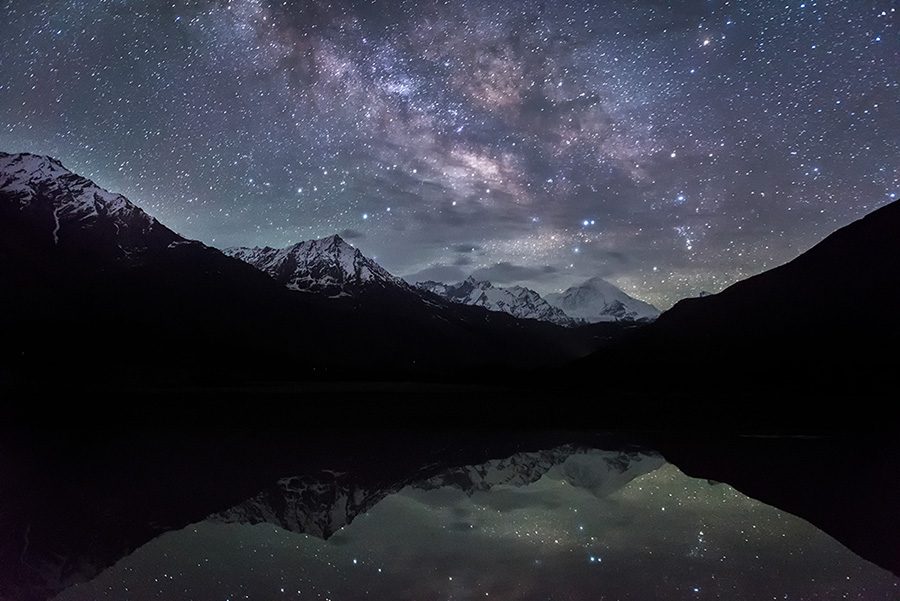
Local Legends Beneath the Stars
The stars over Ladakh are not merely celestial bodies—they’re storytellers, whispering ancient tales passed through generations in the quiet heartbeats of mountain nights. In remote villages like Garkone, Nubra, and Turtuk, the night sky isn’t observed—it’s listened to, remembered, and retold as folklore shaped by centuries of quiet contemplation.
One crisp evening in Garkone, beneath a vivid tapestry of constellations, I sat beside Dolma, an elder whose gentle voice seemed woven from the fabric of the night itself. The fire crackled softly, casting flickering shadows onto her lined face as she pointed upwards, tracing patterns only she could fully discern.
“There,” she began softly, pointing towards a cluster of glittering stars, “is the story of Rinchen and Dolkar—lovers separated by the vast Himalayan range.” Dolma paused, the firelight reflecting in her eyes. “They belonged to rival kingdoms, forbidden to meet. Yet, each night, they climbed the highest peaks and sang softly to each other, their voices carried by the wind.”
Villagers say that the brightest stars shining over those peaks today are Rinchen and Dolkar, eternally watching over each other, joined by the invisible threads of their whispered songs. This legend isn’t simply entertainment—it’s an expression of Ladakhi culture’s profound relationship with nature, where stars, mountains, and love stories intertwine seamlessly.
In Turtuk, near the edge of Baltistan, another tale emerged beneath star-studded skies. Sitting with villagers around cups of hot chai, I heard about the mysterious “Sky River,” their poetic name for the Milky Way. Legend tells that when the gods were shaping the Himalayas, drops of celestial nectar spilled from their vessels, leaving behind a shimmering path in the sky. Locals believe that gazing at this cosmic trail brings wisdom, peace, and clarity, especially during difficult times.
These Ladakhi stories are not simply myths; they serve as living reminders of deeper truths—of patience, longing, and resilience. They highlight the villagers’ intimate connection to their environment, their respect for silence, and their ability to find profound meaning in the simplest moments beneath starlit skies.
When I finally left Ladakh, these legends traveled with me. On clear nights in my adopted village near Lake Bled, I often find myself looking upward, tracing familiar constellations, hearing Dolma’s gentle voice in the silence. Perhaps, this is the true magic of Ladakh’s night skies: they create bridges between places, stories, and souls.
After all, as Dolma taught me under those ancient, glittering stars, every light in the night sky has a story—waiting quietly to be told, to anyone willing to pause and listen.
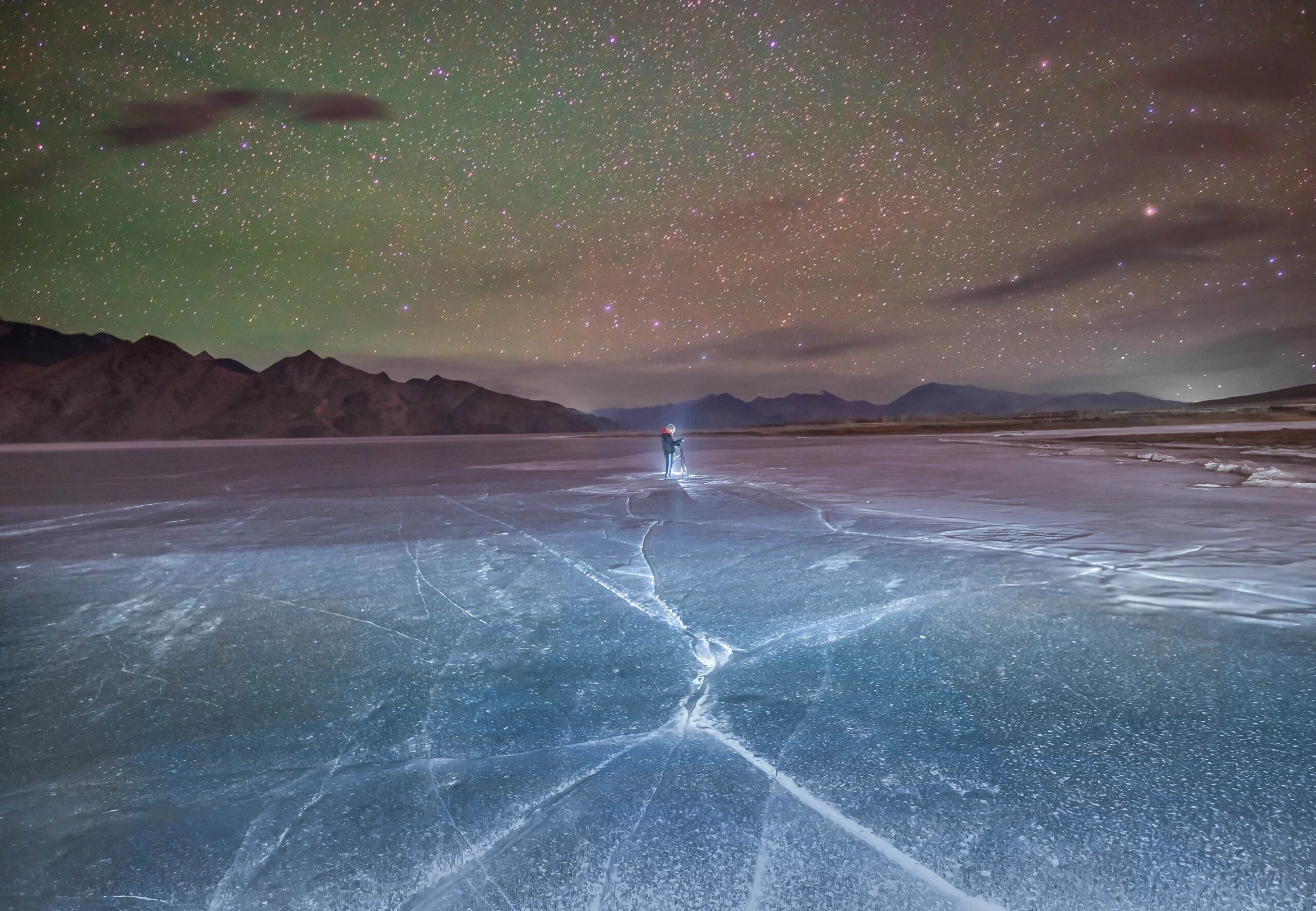
Why Silence is the New Luxury
In a world drowning in sound, silence has become the rarest treasure—a luxury money alone cannot purchase. Yet here, in Ladakh’s quiet, remote villages, silence is as abundant as the clear mountain air. It arrives effortlessly, settling softly like snow upon stone roofs, blanketing every valley and ridge. It’s a luxury not of lavish hotels or gilded comforts, but of quietude, mindfulness, and peace.
My journey through Ladakh taught me that silence is not merely the absence of noise; it’s an active presence, a gentle force capable of resetting life’s hurried rhythm. In these high-altitude villages, stillness becomes tangible. It’s present in the whispered rustle of barley fields at midnight, in the distant howl of a snow leopard echoing from unseen cliffs, and in the quiet murmurs of villagers sharing evening tea beneath lantern-light.
European city life has trained us to accept noise as normality: traffic, conversations, constant notifications from our phones. But Ladakh reminds us what silence feels like—profound and transformative. Nights beneath the starlit Himalayan skies offer no distraction, only introspection. Under this vast celestial canopy, I found clarity that seemed impossible amid the chaos of urban living.
The Ladakhi villagers inherently understand silence’s power. Their daily routines, their spiritual practices, and even their interpersonal relationships revolve around a deeply rooted respect for quiet moments. Silence here is never empty—it’s filled with meaning, contemplation, and an awareness of life’s simple joys. Time slows, senses sharpen, and thoughts settle like sediment, revealing hidden depths.
In these villages, silence becomes the truest luxury precisely because it demands nothing—no gadgets, no purchases, no complex rituals. It requires only presence, humility, and openness. The luxury here lies in reconnecting with something infinitely precious and universally human: stillness of mind and heart.
I remember vividly one particular night in Hanle, wrapped in blankets, my breath forming tiny clouds against the crisp Himalayan air. Above me, stars stretched endlessly. And in that profound quiet, I realized that this was the luxury I’d sought unknowingly through all my travels. Not grand vistas or opulent comfort—but simply the ability to sit quietly, without rush or expectation, beneath the gentle illumination of a thousand distant suns.
For travelers exhausted by noise and the endless pursuit of more, Ladakh offers an elegant simplicity. It offers the chance to rediscover silence not as emptiness, but as fullness. And perhaps in our noisy, modern lives, that is the greatest luxury of all.
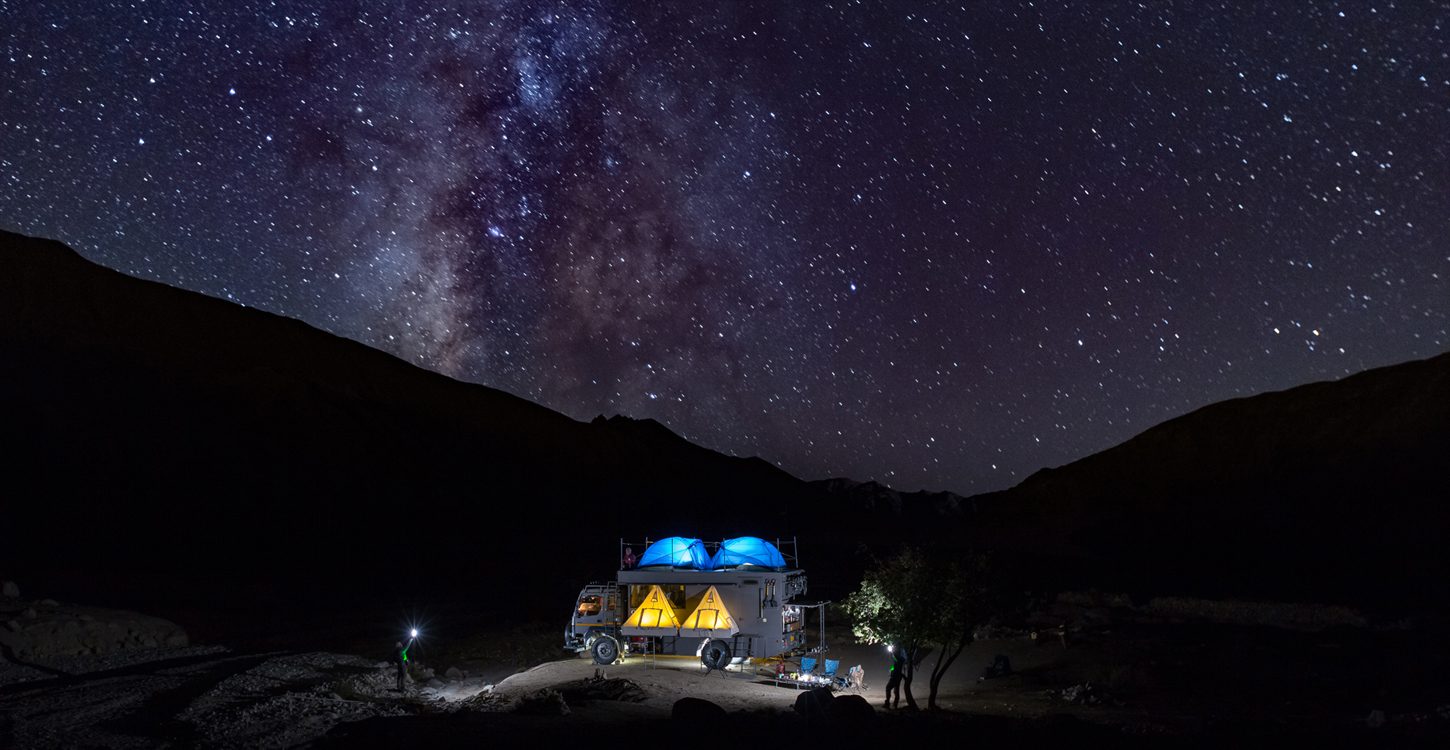
Practical Tips for a Star-Filled Journey
Traveling to Ladakh for its stunning night skies and serene villages is more than a journey—it’s a mindful adventure that requires thoughtful preparation. Having explored these remote Himalayan corners firsthand, I’d love to share a few essential insights to help you craft your own unforgettable starlit experience.
Choose the right time: While Ladakh’s skies dazzle year-round, the best months for clear, breathtaking stargazing experiences are from September to December. During these months, the air is dry, skies are clear, and celestial visibility peaks dramatically.
Select your villages carefully: For the deepest immersion into Ladakh’s celestial silence, consider villages like Hanle, Turtuk, Sumda Chun, Nubra Valley, or Garkone. Each offers unique charms—from Hanle’s observatory and stark beauty to Turtuk’s lush apricot orchards and ancient folklore. Combining a few villages provides varied experiences, but plan ample travel time between them due to challenging terrain.
Acclimatize gradually: Ladakh’s high-altitude environment requires patience. Upon arrival, give yourself at least two days to rest, drink plenty of fluids, and allow your body to adjust. Altitude sickness is preventable with slow pacing and proper hydration.
Pack strategically: Nights here are always cold, even in summer. Essential items include thermal base layers, a warm insulated jacket, gloves, wool hats, and sturdy hiking boots. A comfortable sleeping bag is advisable, especially if staying in homestays where nighttime temperatures can dip significantly.
Photography essentials: If photographing the night sky, bring a sturdy tripod, extra batteries (as cold drains battery life quickly), and a camera with manual mode capabilities. A wide-angle lens (ideally f/2.8 or wider) captures Ladakh’s expansive sky perfectly. Remember to use red-light headlamps or dim flashlights to maintain your night vision and preserve the tranquility around you.
Responsible travel: Ladakh’s pristine beauty is delicate. Avoid leaving behind plastic or waste. Respect local customs and traditions, speak softly at night, and use minimal artificial lighting. The magic of Ladakh’s silence depends greatly upon your mindfulness and respectful behavior.
Connect with locals: Engage with villagers—your greatest guides. They hold stories and practical wisdom that no guidebook can provide. Staying in homestays not only supports local communities but also enriches your experience immeasurably.
Finally, approach Ladakh with openness. Allow yourself to embrace its rhythms, slow your pace, and truly appreciate the rare luxury of silence. A star-filled journey in Ladakh isn’t merely sightseeing—it’s soul-seeing. You’ll return home not just with stunning photographs, but with memories etched deep by the gentle glow of Himalayan stars.
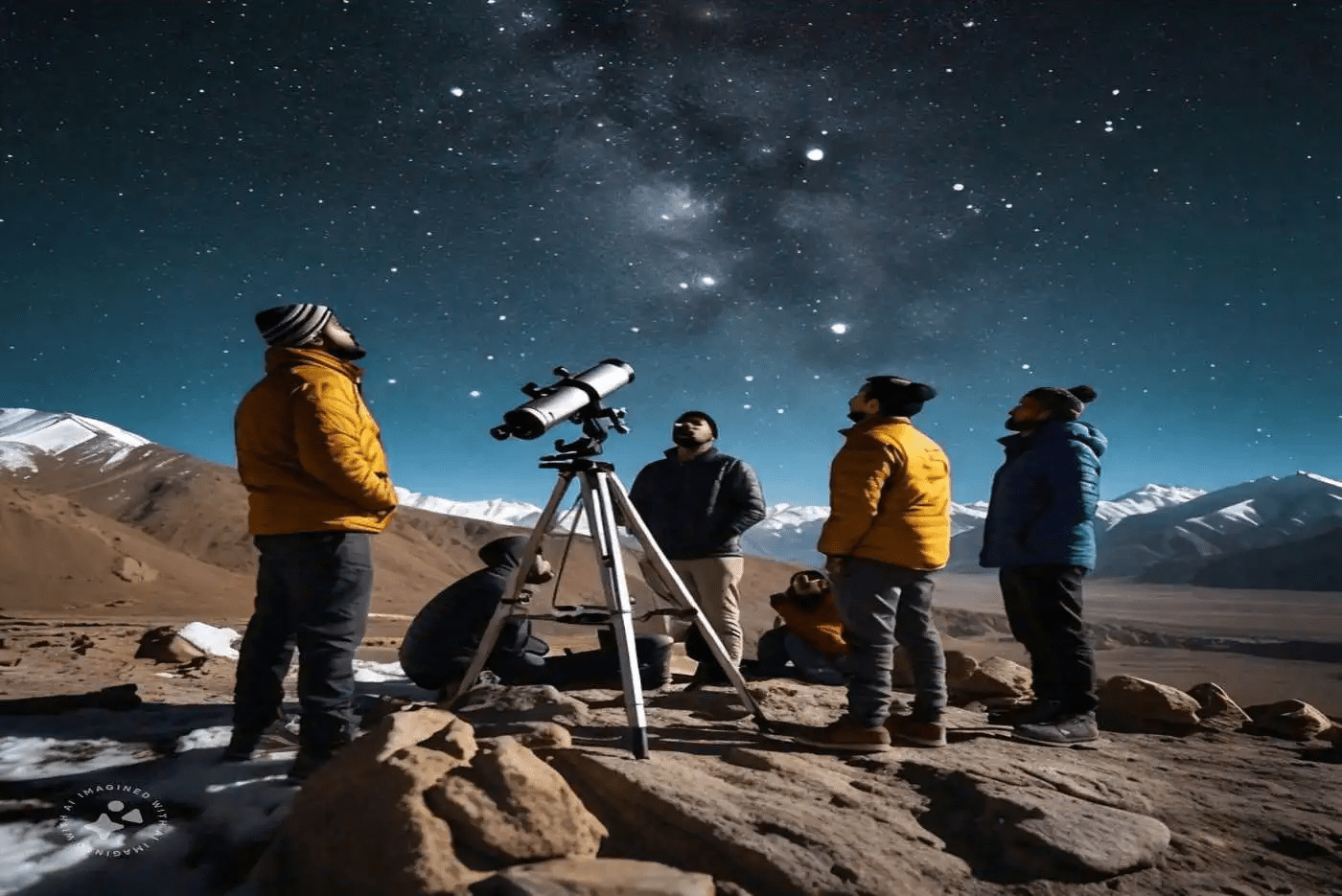
📝 Author’s Note – About Elena Marlowe
Elena Marlowe is an Irish-born essayist currently residing in a tranquil village near Lake Bled, Slovenia.
Her writings gently explore the quiet intersections of landscape, memory, and belonging.
Passionate about mindful travel, Elena shares stories designed to inspire readers
to slow down, look deeper, and reconnect with the world’s hidden beauty.

